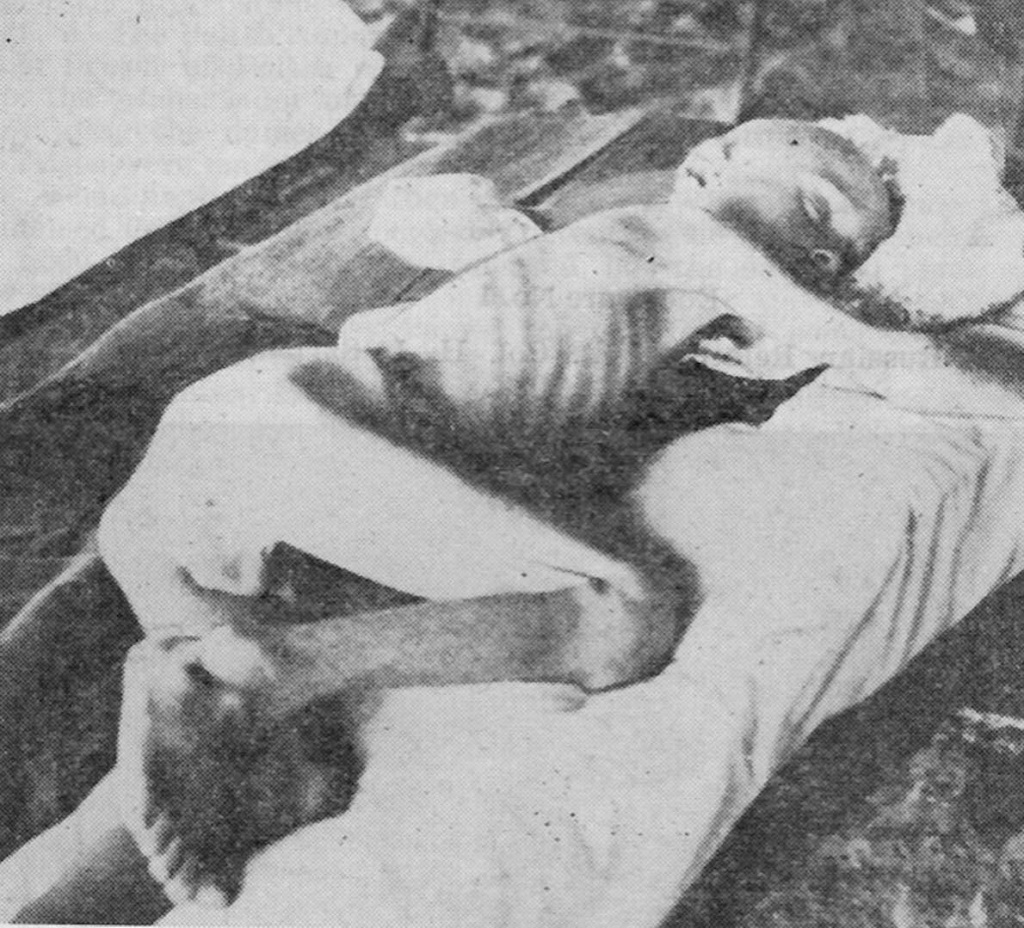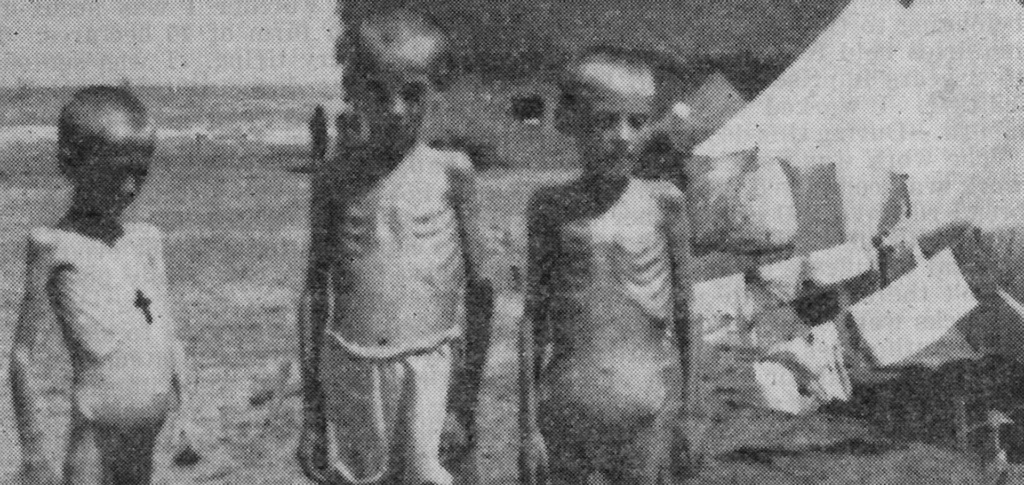U.S. Government Propaganda Photo, 1943
The cinema newsreel British Pathé film shot in in 1943 a propaganda film about Polish refugees who had come from the Soviet Union to Iran. The film is remarkable for the scarcity and vagueness of information about why these Poles were evacuated to Iran and what had happened to them earlier in the Soviet Union. The British film shows generally healthy looking refugees even though many had arrived in Iran from Soviet Russia in 1942 starved and near death. This was documented earlier by a U.S. Army officer, Lieutenant Colonel Henry I. Szymanski, whose photographs and photos, however, were promptly classified as secret by President Franklin D. Roosevelt’s military officials and not released until 1952.
In the meantime, Western public opinion was deceived by British and American government propaganda. The same was true for foreign audiences to Voice of America (VOA) broadcasts which promoted Soviet propaganda lies about Stalin’s massacre of 15,000 Polish military officers, which Moscow blamed on the Germans, and put out deceptive information about Polish refugees leaving slave labor camps in Russia by presenting them as fleeing from Nazi occupation. The British Pathé film is less deceptive than Voice of America and other U.S. Office of War Information (OWI) wartime propaganda about Polish refugees, but it is still far short of painting an objective picture of the suffering and death the Poles experienced in Soviet captivity. The film offers only a few vague tips as to their fate in Russia. Such propaganda was then justified by the need to maintain a strong alliance with Stalin to fight Germany and to maintain the morale of the Polish Army of General Władysław Anders, composed of former Polish prisoners of the Soviet Gulags. These Polish soldiers later fought alongside American and British forces in North Africa and Italy.
The film shows that Polish refugees were well treated and received help in Iran from representatives Polish, British and American governments and relief organizations, which was true. They were also warmly welcomed by the Iranians who were horrified by the condition of the former prisoners and slave laborers in Soviet Russia.
The photo shows an intact Polish family, when in reality many families lost fathers and husbands who had been executed or worked to death by the Soviets. Many Polish women had also died in Soviet captivity. The death rate among the children was especially high. By ignoring these facts, the film can only be described as propaganda to cover up Stalin’s crimes and to confuse Western public opinion about what could be his real post-war plans.
Photos by Lt. Col. Henry I. Szymanski, U.S. Army
- Twelve-year-old boy, Polish evacuee from Russia, August 1942
- Six-year-old boy, Polish evacuee from Russia, August 1942
- Three sisters, ages 7, 8, and 9, Polish evacuees from Russia, August 1942
- Photos by: Lieutenant Colonel Henry I. Szymanski, U.S. Army
- Source: The Katyn Forest Massacre: Hearings Before The Select Committee to Conduct An Investigation on The Facts, Evidence and Circumstances of the Katyn Forest Massacre; Eighty-Second Congress, Second Session On Investigation of The Murder of Thousands of Polish Officers in The Katyn Forest Near Smolensk, Russia; Part 3 (Chicago, Ill.); March 13 and 14, 1952 (Washington: United States Government Printing Office, 1952), pp. 459-461.
- Link
6. …it appears that the plan was very carefully worked out, and its purpose was the extermination of the so-called intelligentsia of Eastern Poland.
…Families were broken up and in many cases the husband shot.
11. Women not accustomed to hard manual labor and consequently not able to earn enough for their daily bread had a choice of starving to death or submitting to the Bolshevik or Mongol supervisor. In one sense their condition was bettered–they had something to eat. When asked by me whether they worked hard, a reluctant answer of, “I wanted to live,” would be given [to] me. The Polish military medical authorities are taking blood tests to determine the number of generals among women. The tests were not completed prior to my departure, but the results will be handed [to] me.
10. The children had no chance. It is estimated that 50% have already died from malnutrition. The other 50% will die unless evacuated to a land where American help can reach them. A visit to any of the hospitals in Teheran will testify to this statement. They are filled with children and adults who would be better off not to have survived the ordeal.
- Source: The Katyn Forest Massacre: Hearings Before The Select Committee to Conduct An Investigation on The Facts, Evidence and Circumstances of the Katyn Forest Massacre; Eighty-Second Congress, Second Session On Investigation of The Murder of Thousands of Polish Officers in The Katyn Forest Near Smolensk, Russia; Part 3 (Chicago, Ill.); March 13 and 14, 1952 (Washington: United States Government Printing Office, 1952), pp. 455.
U.S. Government Propaganda Photo

- Title: Teheran, Iran. Polish woman decorating her front yard with design of Polish eagle at an evacuation camp operated by the Red Cross
- Creator(s): Parrino, Nick, photographer, Office of War Information (OWI)
- Date Created/Published: 1943.
- Repository: Library of Congress Prints and Photographs Division Washington, D.C. 20540 USA
- Link




